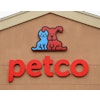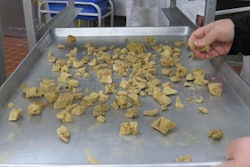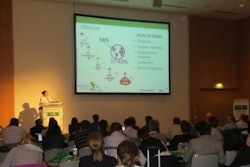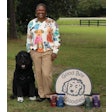
Final 2015 data on US pet food spending from the US Bureau of Labor and Statistics (USBLS) showcases a market on a seemingly endless growth trajectory: Spending increased 22.5% over 2014, by US$5.4 billion, putting total US pet food spending for 2015 at US$29.49 billion. That represents 43.5% of all US pet spending for the year, up from 37.4% in 2014. And, despite the current focus on newer generations of pet owners like millennials (including by yours truly), Baby Boomers remain the biggest pet food spenders.
Analysis and reporting of this data come courtesy of John Gibbons of PetBusinessProfessor.com. “The numbers in this report come from or are calculated by using data from the current and past USBLS Consumer Expenditure Surveys,” he writes. “In 2015, this was gathered by the US Census Bureau from over 40,000 interviews and spending diaries. The final data was then compiled and published by USBLS.”
Thanks to all those efforts, we have a comprehensive look at the viability and strength of the US pet food market and its force as a driver for the entire pet industry. Overall pet spending in the US reached US$67.75 billion in 2015, an increase of US$3.43 billion, or 5.3%. That alone is fairly healthy growth, but obviously not at the level of the pet food segment—which means that spending in at least one other segment declined. (Gibbons is reporting by segment and started with the good news about pet food first.)
What explains the huge surge in pet food spending? USBLS and Gibbons discovered that the average US household (averaged over pet-owning and non-pet-owning households) spent a total of US$230.06 on pet food in 2015, another double-digit increase. In this case, it’s up 21.1% over 2014’s US$189.91. The number of US households grew by only 1.1% in 2015, so that means the ones buying pet food spent more: 17.2% more, in fact, and 3.4% more often, Gibbons reports. In any given week in 2015, 22 million households, or about one-sixth of all US households, bought pet food.
Packaged Facts offers a breakdown of exactly which type of pet owners are buying most frequently; for example, owners of both dogs and cats are the most frequent pet food purchasers, followed by dog owners, while both dog and cat owners who feed wet pet food tend to buy weekly.
But I think Gibbons is spot-on with his analysis of why spending has increased: Continuing a trend seen for several years now, it likely owes to more and more pet parents upgrading to more expensive fare for their furry family members: premium and superpremium, natural and organic products, as well as newer, more expensive formats like raw and freeze-dried. This also applies to spending on treats, including the increasingly popular functional and “nutraceutical” treats that verge on being supplements.
Let’s not write off Baby Boomers just yet
It also comes down to demographics: higher levels of education and income (especially disposable income) leading to pet parents who spare no expense in feeding their beloved pets. In fact, the USBLS data shows that spending on pet food rose among nearly all income levels; only the US$70,000-99,000 group dipped, and that was because the number of households in that segment declined over 5%. Spending decreased by only -1.3%. All other income groups had double-digit increases in spending: 11% for under US$30,000, 21.7% for US$30,000-70,000 and a robust 46.6% for over US$100,000.
Among age groups, Baby Boomer (ages 55 to 64) spending grew the most, at a whopping 100.5%, doubling from US$5 billion in 2014 to US$10.02 billion last year. The huge increase is partially explained by a 4.6% rise in the number of households headed by the age group, but they also spent 65.8% more and 15.6% more often. This proves their continuing influence and importance to the pet food market.
On the other end of the spectrum, while millennial pet owners are growing in number, their spending on pet food is tempered by relatively lower incomes and new expenses as they start to establish their careers, buy homes and start non-furry families, Gibbons writes. Thus, US pet food spending among pet owners ages 25-34 dropped 29.2%, or –US$1.23 billion, ending up at US$2.99 billion in 2015.
But, highlighting the increasing influence of millennial and younger pet owners—perhaps even as heirs to Baby Boomers—people under age 25 had the next largest pet food spending increase, albeit from a much smaller base than Boomers. Their spending grew by 99.2%, up to US$0.82 billion total.
As for other age groups, older Baby Boomers (ages 65-74) also increased their pet food spending, up 32.7%, or US$1.13 billion, to US$4.59 billion, yet pet owners over age 75 spent 19% less, down –US$0.27 billion to US$1.15 billion. Among Gen X pet owners, spending was a mixed bag, with older ones (ages 45-54) showing an increase of 16.2%, or US$0.81 billion, to US$5.87 billion; while those ages 35-44 spent 10.1% less, down –US$0.45 billion to US$4.05 billion.
Though the overall result for pet food is very positive, there are some cautionary tales lurking below the surface. Gibbons’ report includes much more data and analysis that helps uncover some of the concerns and point you in the right direction in terms of product development and marketing. The bottom line: Don’t ignore or write off Baby Boomers, but while you’re riding that gravy train, be on the lookout for new ways to encourage pet ownership among older people and to reach up-and-coming pet parents.


















